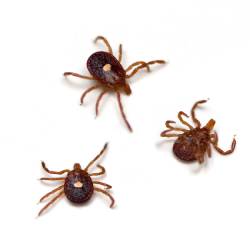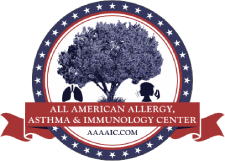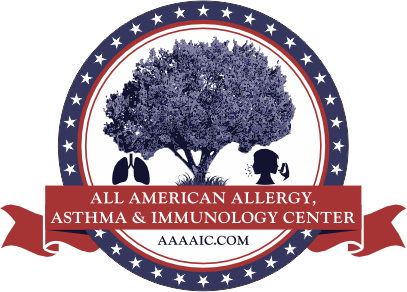Background – Food allergy results when the immune system mistakenly targets a harmless food protein — an allergen — as a threat and attacks it. Unlike other types of food disorders, such as a food intolerance a true food allergy is “IgE mediated.” This means that your immune system produces abnormally large amounts of an antibody called immunoglobulin E — IgE for short. IgE antibodies fight the “enemy” food allergens by releasing histamine and other chemicals, which trigger the symptoms of an allergic reaction. The symptoms may be mild (rashes, hives, itching, swelling) or severe (trouble breathing, wheezing, loss of consciousness). A food allergy can be fatal. It is a serious and potentially life-threatening condition affecting 32 million Americans. Food allergies affect an estimated 8% of children in the United States, that’s 1 in 13 children, or about 2 students per classroom. Food allergy has increased among U.S. children over the past 20 years. Family history appears to play a role in whether someone develops a food allergy. If a child’s parents have a food allergy, their children are at an increased risk. Also, if you have other kinds of allergic reactions, like eczema or allergic rhinitis, you have a greater risk of food allergy.
Food allergy symptoms arise most commonly in infants and children but can appear at any age. You can even develop an allergy to foods you have eaten for years with no problems. This most commonly occurs with nuts and seafood. Although nearly any food can cause an allergic reaction, eight foods account for 90 percent of all food-allergic reactions in the United States. These foods are: peanuts, tree nuts, milk, eggs, wheat, soy, fish, and shellfish. Sesame was recently added as the ninth most common type of food allergy. The foods most associated with food allergy in infants and children are: milk, eggs, peanuts, tree nuts, soy and wheat. Milk, egg, wheat, and soy allergies are often outgrown. Most people do not outgrow peanut, tree nut, fish, and shellfish allergies.
Food intolerances are a series of various syndromes that cause adverse symptoms in the setting of food. These symptoms are usually delayed (>2hrs) and can last hours to days several days. They include: Irritable Bowel Syndrome, Gastroesophageal Reflux Disease, Celiac’s Disease, Inflammatory Bowel Disease, Chronic/Acute Infection, Anatomical pathology (i.e hiatal hernia), Gastroparesis (often due to diabetes), Toxic Reaction, and Enzymatic Disorder (i.e lactose intolerance). Your allergy provider can assist with diagnosing food intolerances.
How it works/Pathophysiology – Ingestion of a food/beverage that one is allergic to cause the immune system to produce an antibody (IgE). The IgE antibody in turns makes inflammatory cells that line the tissues in the body release inflammatory mediators such as Histamine and Leukotrienes. These inflammatory mediators can cause symptoms that adversely affect the airways, skin, gut and even the cardiovascular system.
Symptoms
Symptoms of a mild food allergic reaction may include:
- Itchy or runny nose, sneezing
- Itchy or tingling sensation in the mouth
- A few hives, mild itching of skin
- Mild nausea or discomfort
- More severe symptoms include:
- Hives over large area of the body
- Shortness of breath, wheezing, repetitive cough
- Swelling of tongue or lips
- Hoarse, tightness in throat, trouble breathing or swallowing
- Pale/blueish appearance, faint, dizzy
- Stomach discomfort such as abdominal cramps, diarrhea, vomiting
- Feeling of impending doom
The most severe food allergic reaction is anaphylaxis which is a life-threatening whole-body reaction that can impair your breathing, cause a dramatic drop in your blood pressure, and affect your heart rate. Anaphylaxis can come on within minutes of exposure to the trigger food and can be fatal if not treated promptly with an injection of epinephrine (adrenaline).
Self-Treatment Tips
- Strict avoidance of known triggers
- Ultra-vigilance of ingredients and processing environment of foods and beverages that you plan to consume
- Reading food labels
- On hand carry of EPIPEN always (prescribed by physician)
- Wearing alert jewelry
- Wearing waterproof gloves when handling food products you are allergic to
Diagnostic Testing – Food Allergy Skin testing consist of Prick or Intradermal Skin testing consist of pricking or intradermally introducing the arms and/or back with up to 60 foods. 20 minutes later, the wheel and flare of the prick site is measured, and the allergy provider will discuss the results and overall interpretation.
Direct food testing with food(s) in question can be done in which is called a “prick-prick” testing. With this form, the food item is pricked and then the patient’s skin is pricked. 20 minutes later, the wheel and flare of the prick site is measured, and the allergy provider will discuss the results and overall interpretation.
In-Vitro food allergy testing consists of whole blood draw at a local lab for which the whole blood is analyzed for the IgE antibody to various foods. About 1.5 wks later, the allergy provider will discuss the results and overall interpretation.
Patch Skin Testing consists of directly exposing a patient’s skin to a suspected trigger. Very small chambers containing different potential allergens are taped to a patient’s back for several days to see what skin reactions occur. Chambers may contain a variety of substances to include foods and preservatives. Localized patches of inflammation appear within 2 to 4 days, or even up to a week, if a skin allergy is present.
Food Challenge Testing consists direct ingestion of food (s) in question under clinical supervision. It is usually done in a stepwise fashion over increments of time (i.e every 20-30 min). This test is the most accurate diagnostic testing for food allergies. The test is conducted under physician supervision. However, the allergy provider will determine the patient’s candidacy.
Food Diary consists of a list of food and/or beverages that were consumed at least (2-4) hours before the adverse symptoms began. The diary can assist the allergy provider with narrowing down the trigger.
Therapies:
Avoidance – All patients with a confirmed food allergy must practice strict avoidance of the allergy-causing food. This is the ONLY way to prevent a reaction. Every patient should read labels on packaged foods and ask friends and family what ingredients they have used when preparing meals. Do not eat foods from a buffet if you cannot identify all ingredients and ensure that you know exactly what you are eating and drinking. Always make the servers/chef aware of your specific allergies. These patients should also wear alert jewelry.
Epinephrine – Patients who experience life threatening symptoms such as airway closure or adverse symptoms involving (2) or more organ systems due to a reaction to a food should carry an EPIPEN. This condition is called anaphylaxis. The EPIPEN can temporarily reverse some of the life-threatening symptoms. It should be always with the patient.
Oral Immunotherapy – Oral immunotherapy re-trains the immune system to become desensitized to food allergens through regular ingestion of food proteins at increasing doses. For example, someone with a peanut allergy may be given a very small amount of peanut protein to build up a tolerance to peanuts over time. OIT at this time is FDA approved only for peanuts (Palforzia). The therapy is indicated for patients 4–17 with a confirmed diagnosis of peanut allergy. This prescription medication, derived from peanuts, can minimize the risk of severe allergic reaction, including anaphylaxis, in the event of an accidental peanut exposure.
Early Introduction Program:
This program is designed for children who are at moderate to severe risk of having food allergies (severe eczema or egg allergy). The idea that highly allergenic foods, such as peanuts, should be introduced into the diet early to prevent risk of allergy. The approach is based on the Learning Early About Peanut Trial (LEAP). These patients undergo testing for food (s) that are being withheld. Children with insignificant test results are then introduced to the food (s) either in clinic or at home under an allergy provider directed protocol. The early introduction program can reduce the likelihood of a child having a food allergy by introducing food (s) early on. Studies such as the LEAP study show that withholding so called “allergenic foods” can actually increase the risk of developing a food allergy.
Pollen Food Allergy Syndrome:
Patients with Pollen Food Allergy Syndrome (PFAS) experience itching, irritation, and sometimes a rash on or around the mouth and throat within seconds of eating raw/fresh veggies, fruits and or nuts. The symptoms disappear once the food is swallowed. They often also tolerate the food in a processed form such as in a soup, pastry, or juice. This syndrome is due to cross reactivity with aeroallergen pollen that they are allergic too. Some aeroallergen pollens look identical to proteins in certain raw fruit, nuts or veggies. For example, a patient who is allergic to tree pollen may experience mouth itching when eating apples. Patients with ragweed allergy may experience mouth itching from eating melons and bananas. The list of tree/weed and fruit/vegetable cross reactivity is long. Most patients are allowed to consume the foods as tolerated. However, there is an increased chance of developing a moderate – severe food allergy to the foods at some point. Aeroallergen immunotherapy can reverse this. Your allergy provider will provide testing, management plan and education on this syndrome.
Alpha Gal Allergy:
Patients with Alpha Gal Allergy experience delayed adverse symptoms (>2-7 hours) after ingesting non-primate mammalian meats (beef, lamb, pork etc.), or their products. The symptoms range from localized hives/angioedema, bloating, diarrhea, constipation, vomiting to full scale anaphylaxis. This syndrome is caused by past exposure to ticks (lone star tick) who have mammalian carbohydrates in the saliva (oligosaccharide galactose-a1, 3-galactose) from biting a mammal before such as deer, cow, or sheep.

The patient’s immune system generates antibodies against alph gal. The next time they ingest mammalian meat, the inflammatory cascade is ignited, and they experience delayed symptoms. Patients with suspected alpha gal allergy are confirmed with in-vitro alpha gal antibody testing. They are issued an EPIPEN, advised to avoid all red and mammalian meat, avoid subsequent tick exposure, and educated on other foods and medications that may contain alpha gal.
Other Cross-Reactive Syndromes:
Other cross-reactive syndromes include pork-cat syndrome, fish-chicken syndrome, and latex – chestnut, advocado, kiwi and bananas syndrome. Patients with these allergies to one of them will experience adverse symptoms with the other one. This is cross reacting proteins, which ignites an inflammatory cascade. Your allergy provider will assist with diagnostic testing and treatment/management plan.

